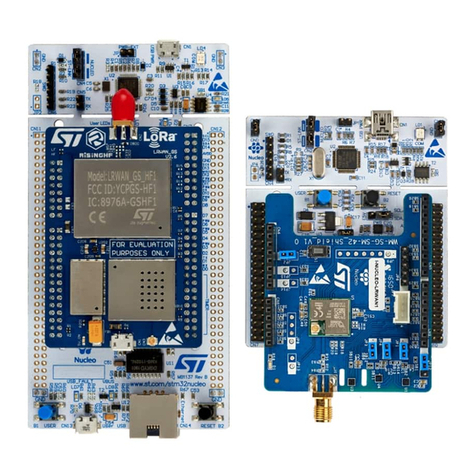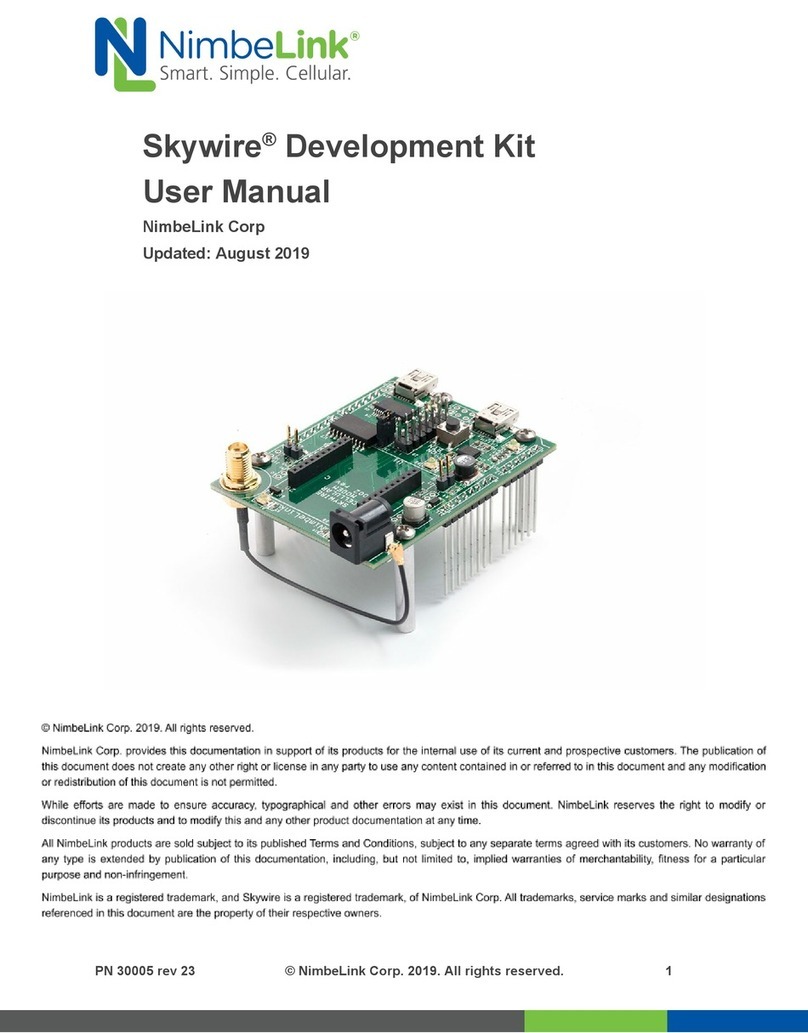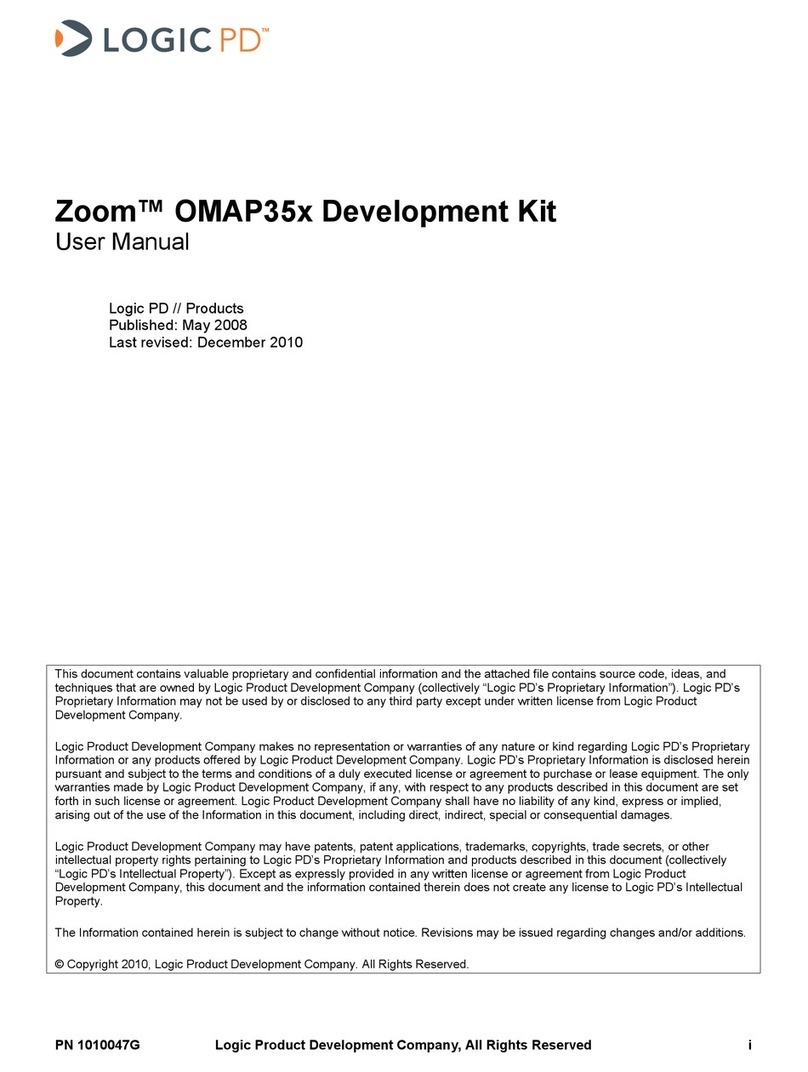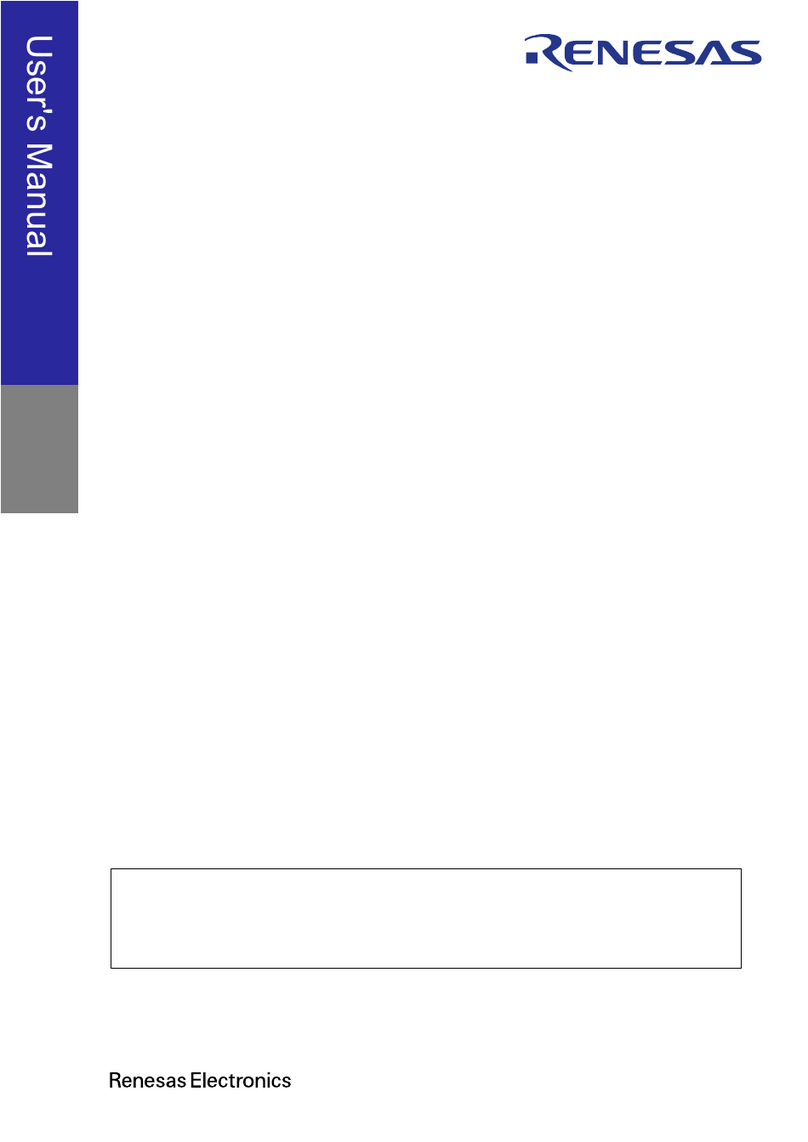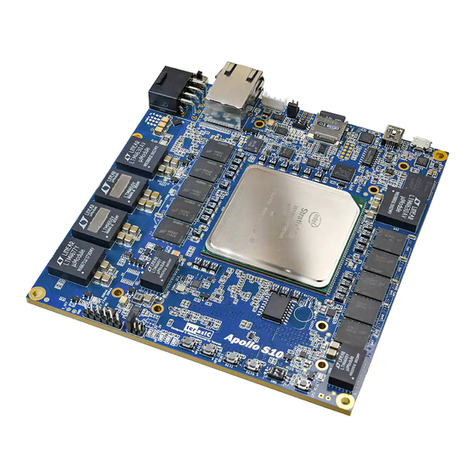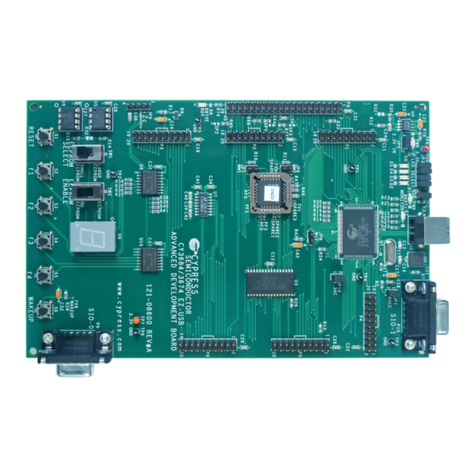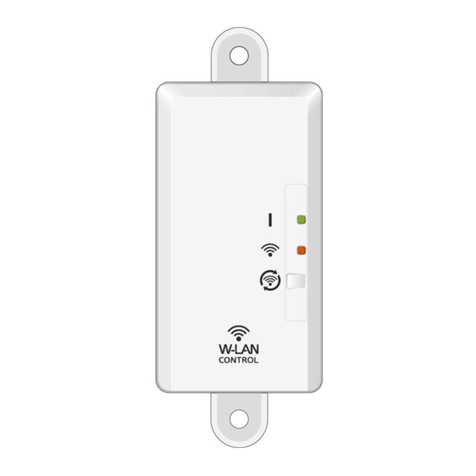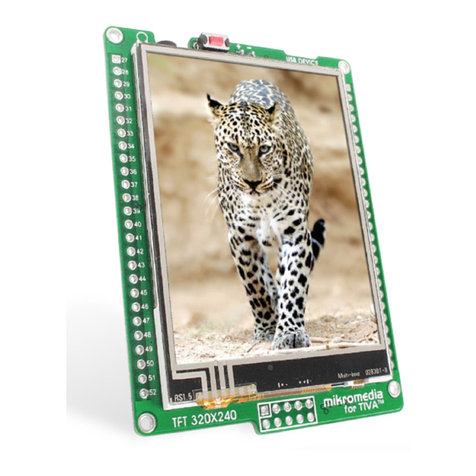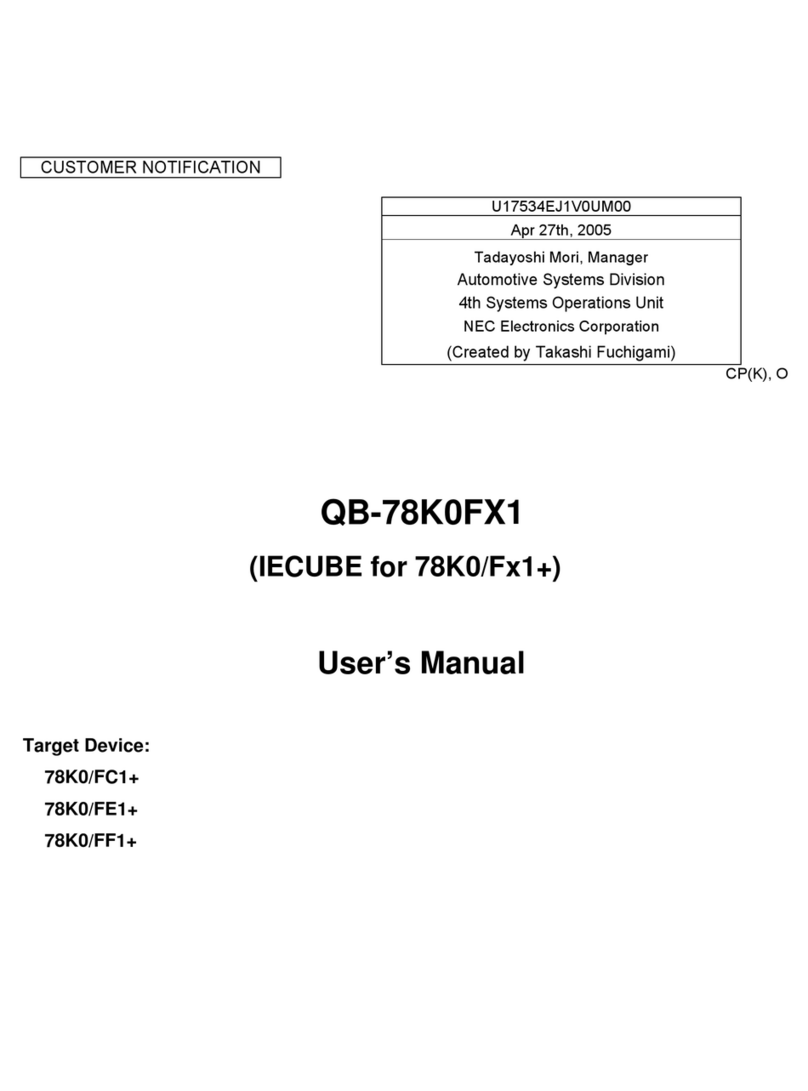MXCHIP MiCOKit-3239 User manual

Shanghai MXCHIP Information Technology Co., Ltd.
Address:Floor 9, Building 5, No. 2145, Putuo District, Shanghai (200333) Telephone:021-52709556 Website:http://mxchip.com/
MiCOKit-3239 Development Kit Hardware Manual
Abstract
MiCOKit from MXCHIP is one development kit based on MiCO. It could be used for the development of smart
devices and the demos. This development kit provides one easy solution for developing smart devices. And it’s
convenient in achieving the applications of users.
More Help
Please login the website: http://mxchip.com/ to get Mxchip's latest product information.
Hardware Engineering Department Working Group
Jing Minhua
Track Number: RM0087EN
MXCHIP Co., Ltd
Version: 1.1
July 2017
Category: Reference Manual
Open

MiCOKit-3239 Development Kit Hardware Manual [Page 1]
RM0088EN
Version Record
Date
Version
Update content
6-29-2017
V1.0
Initial version.
7-11-2017
V1.1
Add section 3: description of extension board

MiCOKit-3239 Development Kit Hardware Manual [Page 2]
RM0088EN
Catalog
MiCOKit-3239 Development Kit Hardware Manual ...................................................................................................... 1
Version Record .................................................................................................................................................................... 1
1. Overview...................................................................................................................................................................... 4
Hardware.......................................................................................................................................................... 4 1.1
Software ........................................................................................................................................................... 5 1.2
Support for developers..................................................................................................................................... 5 1.3
2. Main board .................................................................................................................................................................. 6
Power ............................................................................................................................................................... 6 2.1
USB to UART.................................................................................................................................................. 7 2.2
Wi-Fi module ................................................................................................................................................... 8 2.3
LED lights........................................................................................................................................................ 9 2.4
Working mode................................................................................................................................................ 10
2.5
Buttons........................................................................................................................................................... 10 2.6
JTAG debug connector................................................................................................................................... 10 2.7
Arduino connector ......................................................................................................................................... 11 2.8
Schematics ..................................................................................................................................................... 12 2.9
PCB................................................................................................................................................................ 13 2.10
3. Extension board ........................................................................................................................................................ 15
OLED screen.................................................................................................................................................. 16 3.1
RGB LED ...................................................................................................................................................... 16 3.2
Environment sensor (optional)....................................................................................................................... 17 3.3
Nine axis motion sensor (optional) ................................................................................................................ 18 3.4
Range& solar sensor ...................................................................................................................................... 18 3.5
Temperature& humidity sensor...................................................................................................................... 19
3.6
Infrared reflection switch ............................................................................................................................... 20 3.7
Solar sensor.................................................................................................................................................... 20 3.8
Mini-type DC motor ...................................................................................................................................... 21 3.9
Standard Arduino connector .......................................................................................................................... 21 3.10
Arduino sensor connector .............................................................................................................................. 22 3.11
UART connector ............................................................................................................................................ 22 3.12
Schematic of extension board ........................................................................................................................ 23 3.13

MiCOKit-3239 Development Kit Hardware Manual [Page 3]
RM0088EN
Picture Catalog
Figure 1 MiCOKit Development Board .............................................................................................................. 4
Figure 2 MiCOKit-3239 Main Board .................................................................................................................. 6
Figure 3 The Circuit of Power Supply................................................................................................................. 7
Figure 4 USB to UART Circuit ........................................................................................................................... 8
Figure 5 Serial Installing ..................................................................................................................................... 8
Figure 6 EMW3239 ............................................................................................................................................. 9
Figure 7 LED Circuit........................................................................................................................................... 9
Figure 8 Buttons ................................................................................................................................................ 10
Figure 9 JTAG Connector...................................................................................................................................11
Figure 10 Arduino Connector .............................................................................................................................11
Figure 11 MiCOKit Extender Board.................................................................................................................. 15
Figure 12 OLED Screen Circuit ........................................................................................................................ 16
Figure 13 RGB Driver Circuit ........................................................................................................................... 17
Figure 14 P9813 Driver Timer........................................................................................................................... 17
Figure 15 Environment Sensor Circuit .............................................................................................................. 17
Figure 16 Nine-axis Motion Sensor Circuit....................................................................................................... 18
Figure 17 APPLE CP Circuit ............................................................................................................................. 18
Figure 18 Range& Solar Sensor Circuit ............................................................................................................ 19
Figure 19 Temperature& Humidity Sensor Circuit............................................................................................ 19
Figure 20 DHT11 Timing .................................................................................................................................. 20
Figure 21 Infrared Reflection Sensor Circuit..................................................................................................... 20
Figure 22 Solar Sensor Circuit .......................................................................................................................... 21
Figure 23 DC Motor Circuit .............................................................................................................................. 21
Figure 24 Extender Board Arduino Circuit........................................................................................................ 22
Figure 25 Arduino Sensor Connector Circuit .................................................................................................... 22
Figure 26 UART Connector Circuit................................................................................................................... 22
Figure 27 Schematic of extension board............................................................................................................ 23
Table Catalog
Table 1 Working Mode ...................................................................................................................................... 10

MiCOKit-3239 Development Kit Hardware Manual [Page 4]
RM0088EN
1. Overview
MiCOKit from MXCHIP is one development kit based on MiCO. It could be used for the development of smart
devices and the demos. This development kit provides one easy solution for developing smart devices. And it’s
convenient in achieving the applications of users.
MiCOKit features:
Based on MiCO, high efficiency, safe and easy to use;
Sufficient peripherals;
Various Demos and perfect MiCOKit SDK are available;
The kits include hardware, software and community parts with MiCOKit development board and the demos about
how to connect to cloud platform to achieve the controlling by mobile phone.
FogCloud service is prepared;
Interaction with phone and PC;
Interface for main third cloud platform: Aliyun, Microsoft, Amazon, IBM, Wechat, AirKiss, Ayla,
FogCloud, GizWits, Haier U+, Arrayent and so on;
Figure 1 MiCOKit Development Board
Hardware1.1
Double plate cascade structure is applied in MiCOKit. It includes two parts: one is the standard Arduino board with
MCU and wifi core, and the other one is the Arduino extender board. The main board has various types, while the
extender board is one standard board which can fit in different main board. The extender board equips with RGB
LED, various sensors and some debug .pins which can be used to achieve quick developments.

MiCOKit-3239 Development Kit Hardware Manual [Page 5]
RM0088EN
Part number: MiCOKit-3239 (including both baseboard and extension board)
MiCOKit-base-3239 (baseboard only)
Software1.2
MiCOKit is based on MiCO. Developers can easily develop their own product by using supplied SDK which takes
the features of IoT developing.
One completed cloud platform service is already available. Developers could see the sensor data and control the
devices on board by using FogCloud service and APP “MICO enjoy”in order to achieve the interaction between
mobile phone and MiCOKit.
Support for developers1.3
One account of MiCO developers’ community and the privilege for developing support are provided by using
MiCOKit. It includes the necessary developing resources, SDK, MiCO community and the information about how
to connect to other cloud platforms by using interfaces in software frame provided by MXCHIP.
MiCO developers’community: www.MiCO.io.

MiCOKit-3239 Development Kit Hardware Manual [Page 6]
RM0088EN
2. Main board
MiCOKit-3239 applies the Wi-Fi module with Arduino standard, main components:
EMW3239 from MXCHIP;
2Mbyte build-in SPI flash within EMW3239;
Demos about solution of MiCO-Cloud-APP for secondary development;
USB to UART serial port for debugging;
3 indicator LED of working status;
Power supply: Micro-USB 5V with one DC-DC onboard 5V-3.3V.
JTAG/SWD debug connector;
Pins for Arduino extender board;
The functions of the pins on MiCOKit main board could be distinguished by color. Yellow is for digital signal pins,
blue is for analogue signal pins and red is for power supply.
Figure 2 MiCOKit-3239 Main Board
Power2.1
MiCOKit uses USB as the power supply and serial communication, and one high efficient DC-DC (TD6817).
TD6817 is one monolithic synchronous buck regulator with high efficiency (96%) and constant frequency (1.5MHz).
The output voltage has three types: changeable, stable 1.5V and 1.8V. The maximum output current is 2A, while the
static loss is just 20uA. The output voltage 2.5V-5.5V is suitable for the power supply of single lithium battery. The
switch frequency is set as inner 1.5MHz which is convenient for small SMT inductor and capacitor. It has the
function of over-temperature protection.

MiCOKit-3239 Development Kit Hardware Manual [Page 7]
RM0088EN
The circuit shows like figure 3. The power light D1 lights when power supply works. R7 and J1 are designed for
power consumption testing.
Figure 3 The Circuit of Power Supply
USB to UART2.2
The part USB to UART with FT230X on MiCOKit board is applied for debugging.
The main function:
Handshake signal, modem connector signal, hardware and Xon/Xoff data flow control;
UART: 7/8 Bit data bits, 1/2 stop bits, odd/even parity;
Rate: 300=>3M(TTL), 512Byte buffer;
I/O voltage: 3.3V-5V;
Compatible with USB 2.0;
Driver: Windows 8 32/64-bit, Windows 7 32/64-bit, Windows Vista/Vista 64-bit, Windows XP/XP 64-bit,
Server 2003, XP and Server 2008, Windows XP Embedded, Windows CE 4.2, 5.0 and 6.0, Mac OS-X, Linux
3.2 and greater, Android and so on.
Packaged as SSOP16 and QFN16 with lead free.
The circuit for this part:

MiCOKit-3239 Development Kit Hardware Manual [Page 8]
RM0088EN
Figure 4 USB to UART Circuit
Connecting the USB to PC, it shows a new serial port after installing the driver:
Figure 5 Serial Installing
Wi-Fi module2.3
This MiCOKit uses EMW3239 as the wifi module. Please refer more information on www.mxchip.com.

MiCOKit-3239 Development Kit Hardware Manual [Page 9]
RM0088EN
Figure 6 EMW3239
LED lights2.4
In order to let users know about the working status, there are 3 LED lights D1, D2 and D3 on board.
D1 is power indicator LED.
D2 is system status indicator LED.
D3 is RF status indicator LED.
Figure 7 LED Circuit

MiCOKit-3239 Development Kit Hardware Manual [Page 10]
RM0088EN
Working mode2.5
It designs 3 working mode switches on board for debugging.
Table 1 Working Mode
Boot
STATUS
ELINK
Working Mode
H
/
/
NORMAL WORK
L
H
L
ATE
L
L
H
QC
L
H
H
BOOTLOADER
Buttons2.6
There are 4 buttons on board:
Figure 8 Buttons
JTAG debug connector2.7
MiCOKit uses standard JTAG debug connector for connecting with J-LINK or U-LINK2.

MiCOKit-3239 Development Kit Hardware Manual [Page 11]
RM0088EN
Figure 9 JTAG Connector
Notes:
Limited by the IO of EMW3239, the JTAG interface only supports for SWD debugging mode.
Arduino connector2.8
MiCOKit uses standard Arduino connector for connecting with extender Arduino board.
Figure 10 Arduino Connector

MiCOKit-3239 Development Kit Hardware Manual [Page 12]
RM0088EN
Schematics2.9

MiCOKit-3239 Development Kit Hardware Manual [Page 13]
RM0088EN
PCB2.10

MiCOKit-3239 Development Kit Hardware Manual [Page 14]
RM0088EN

MiCOKit-3239 Development Kit Hardware Manual [Page 15]
RM0088EN
3. Extension board
MiCOKit designs the extender board with standard Arduino connector including various sensors for users to learn
about how to use MICO to develop their own applications.
The devices on MiCOKit extender board can be used to simulate the applications in life for sake of the development
about these applications.
The peripherals:
128x64 OLED double color screen;
Temperature/humidity sensor, light intensity sensor, range sensor and infrared sensor;
8mm RGB LED;
Speed motor;
2 buttons;
Environment sensor, nine axis motion sensor (optional);
CP core for APPLE (optional);
Standard Arduino connector;
Extender connector for Arduino sensor;
UART debug connector;
Figure 11 MiCOKit Extender Board

MiCOKit-3239 Development Kit Hardware Manual [Page 16]
RM0088EN
OLED screen3.1
MiCOKit uses one OLED screen with 32mm square, 128x64 dot-matrix, yellow& blue OLED screen.
The features:
High resolution: 128x64;
Wide-angle: >160°;
Low power: 0.06W on normal;
Power range: 3V-5V;
Working temperature: -30℃~70℃;
Several communication mode: 8-bit parallel port, 4 line SPI, IIC;
CS signal carried;
Compatible with both 3.3V and 5V;
Light level and contrast ratio are controllable by software;
Working life is more than 16000 hours;
OLED screen is cored with SSD1306;
Figure 12 OLED Screen Circuit
RGB LED3.2
MiCOKit designs one RGB LED of 8mm diameter on extender board. It is driven by P9813 and can be controlled by
APP of MXCHIP;
The features:
IC input voltage: 5V~6.5V, LDO built-in, output voltage: 4.5V;
Input signal verified;
1.2MHz ring oscillator built-in to keep stable FREE-RUN output;
The maximum serial clock frequency 15MHz;
With PLL regeneration;
The tolerance voltage is 17V;
Circuit of this part:

MiCOKit-3239 Development Kit Hardware Manual [Page 17]
RM0088EN
Figure 13 RGB Driver Circuit
P9813 driver timer:
Figure 14 P9813 Driver Timer
Environment sensor (optional)3.3
MiCOKit designs one environment sensor BME280 which is optional on extender board. It includes digital
temperature, humidity and air pressure sensors.
BME280 has standard I2C connector.
Figure 15 Environment Sensor Circuit

MiCOKit-3239 Development Kit Hardware Manual [Page 18]
RM0088EN
Nine axis motion sensor (optional)3.4
MiCOKit designs one nine axis motion sensor BMX055 which is optional on extender board. It includes one 12-bit
three-axis accelerometer sensor, one 16-bit gyroscope and one fully functional three-axis magnetic sensor.
BMX055 has normal I2C connector.
Figure 16 Nine-axis Motion Sensor Circuit
MiCOKit designs the CP which is optional on board for Home Kit development with the APPLE authentication
peripherals.
CP uses standard I2C connector:
Figure 17 APPLE CP Circuit
Range& solar sensor3.5
MiCOKit designs one range& solar sensor APDS-9930 on board. This sensor includes one Ambient Light Sensor
(ALS) and one infrared LED sensor for range. Adding the micro-optics on chip could reduce the power consumption.
Additionally, the inner state machine could make device into low power mode.
The features:
Including ALS, infrared LED and range detector;
ALS:
Visual sense like human’s eyes;

MiCOKit-3239 Development Kit Hardware Manual [Page 19]
RM0088EN
Programmable interrupt function with upper and lower limited threshold value;
Resolution ratio: 16-bit;
High sensitivity under working on dark glass
Low lumen at 0.01 lux;
Range detection:
Accurate to 100mm detection;
Including infrared LED and synchronization LED drivers;
Free of factory calibration of range sensor;
Programmable timer:
Power in waiting mode: typical -90uA;
Programmable range: 2.7ms~>8ms;
I2C connector:
Up to 400kHz;
Specific interrupt pins;
Power in sleep mode: typical -2.2uA;
Small package 3.94x2.36x1.35mm.
APDS-9930 has standard I2C connector:
Figure 18 Range& Solar Sensor Circuit
Temperature& humidity sensor3.6
MiCOKit designs one normal temperature& humidity sensor DHT11 on extender board. DHT11 uses single line
serial to transmit data.
Temperature& humidity sensor circuit:
Figure 19 Temperature& Humidity Sensor Circuit
Table of contents
Popular Microcontroller manuals by other brands
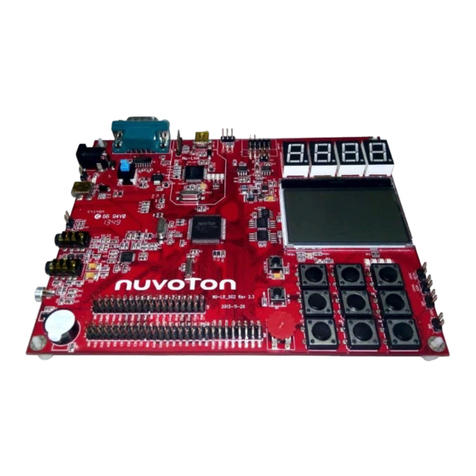
Nuvoton
Nuvoton NuMicro NUC100 Series user manual
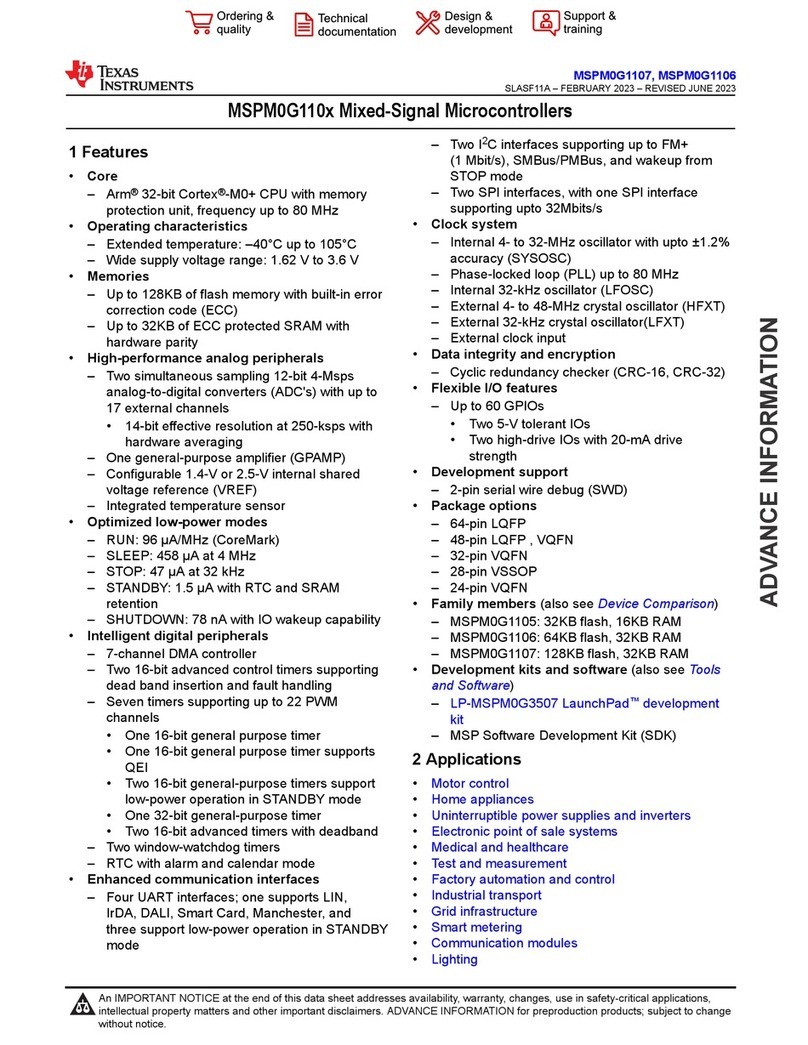
Texas Instruments
Texas Instruments MSPM0G110 Series Advance Information

Panasonic
Panasonic MN103SFX1K manual
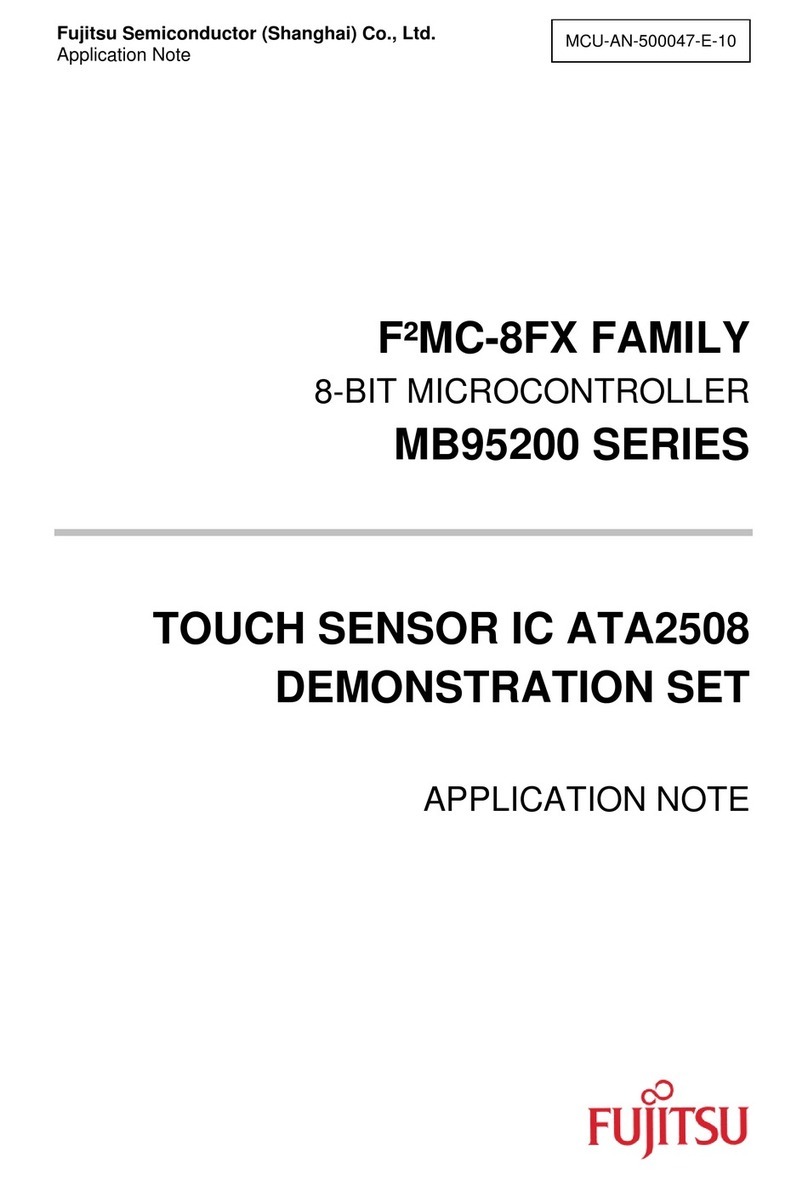
Fujitsu
Fujitsu F2MC-8FX Series Application note

Texas Instruments
Texas Instruments BoosterPack BOOSTXL-RS232 Getting started guide

Texas Instruments
Texas Instruments Chipcon CC2420DK user manual
